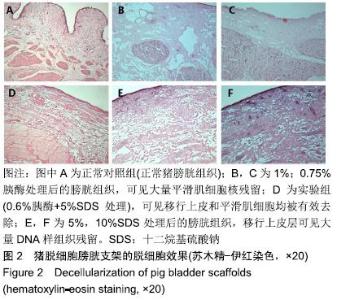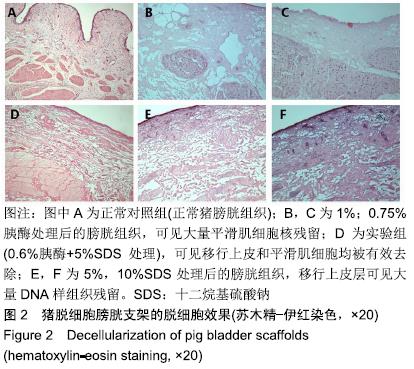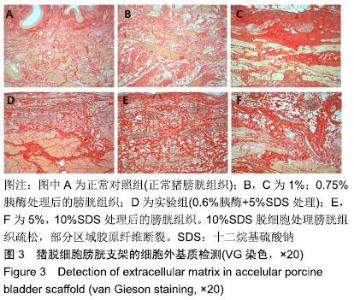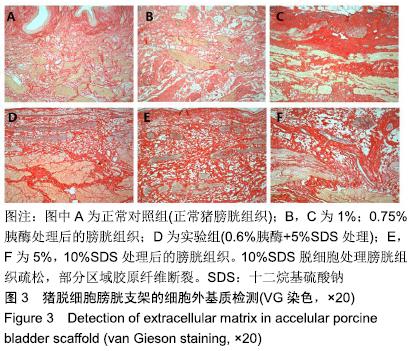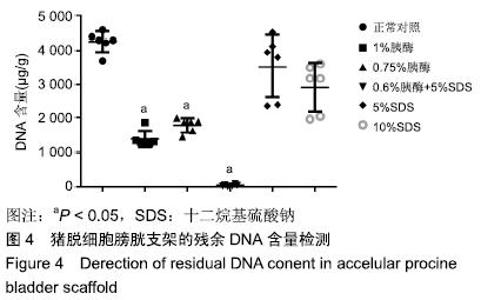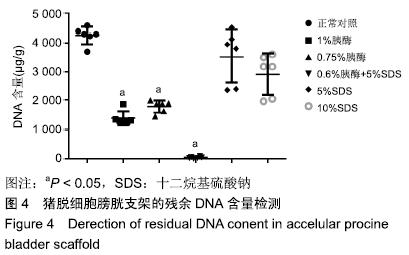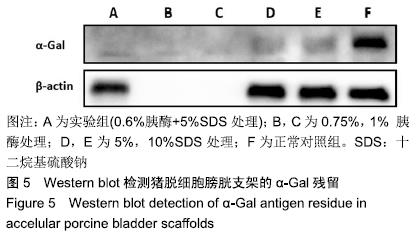[1] SCHENKE-LAYLAND K, VASILEVSKI O, OPITZ F, et al. Impact of decellularization of xenogeneic tissue on extracellular matrix integrity for tissue engineering of heart valves.J Struct Biol. 2003;143(3):201-208.
[2] CEBOTARI S, MERTSCHING H, KALLENBACH K, et al. Construction of autologous human heart valves based on an acellular allograft matrix.Circulation.2002;106(12 Suppl 1): I63-I68.
[3] MATOKA DJ, CHENG EY. Tissue engineering in urology. Can Urol Assoc J. 2009;3(5):403-408.
[4] HAMMOND JS, GILBERT TW, HOWARD D, et al. Scaffolds containing growth factors and extracellular matrix induce hepatocyte proliferation and cell migration in normal and regenerating rat liver.J Hepatol. 2011;54(2):279-287.
[5] APTE U, GKRETSI V, BOWEN WC, et al. Enhanced liver regeneration following changes induced by hepatocyte-specific genetic ablation of integrin-linked kinase. Hepatology. 2010; 50(3):844-851.
[6] SEMLER EJ, RANUCCI CS, MOGHE PV. Tissue assembly guided via substrate biophysics: applications to hepatocellular engineering. Adv Biochem Eng Biotechnol. 2006;102:1-46.
[7] SANTUCCI RA, BARBER TD. Resorbable extracellular matrix grafts in urologic reconstruction. Int Braz J Urol. 2005; 31(3):192-203.
[8] 吴意光,李森恺,王永前,等. 冻干脱细胞膀胱黏膜下基质在尿道下裂修复中的临床应用[J]. 中华整形外科杂志, 2007,23(2): 118-120.
[9] GILBERT TW, SELLARO TL, BADYLAK SF.Decellularization of tissues and organs.Biomaterials. 2006;27(19):3675-3683.
[10] CHENG CW, SOLORIO LD, ALSBERG E. Decellularized tissue and cell-derived extracellular matrices as scaffolds for orthopaedic tissue engineering. Biotechnol Adv. 2014;32(2): 462-484.
[11] ATALA A.Bladder regeneration by tissue engineering.BJU Int. 2001;88(7):765-770.
[12] 王涌泉,甘秀国,安瑞华,等.膀胱无细胞基质移植物重建同种异体兔膀胱的研究[J].中华外科杂志,2005, 43(18):55-58.
[13] 王元天,许纯孝.无细胞基质移植物在动物膀胱重建中的应用[J].国外医学:生物医学工程分册, 2000,(2):120-122.
[14] GONZALEZ EJ, ARMS L, VIZZARD MA. The role(s) of cytokines/chemokines in urinary bladder inflammation and dysfunction.Biomed Res Int. 2014;2014:120525.
[15] SHEN S, XIA CM, QIAO LY. The urinary bladder of spontaneously hypertensive rat demonstrates bladder hypertrophy, inflammation, and fibrosis but not hyperplasia. Life Sci. 2015;121:22-27.
[16] 孙龙,池一凡,林明山,等. 猪主动脉脱细胞血管基质制备[J].中国比较医学杂志,2008,18(8):65-66.
[17] VAFAEE T, THOMAS D, DESAI A, et al. Decellularization of human donor aortic and pulmonary valved conduits using low concentration sodium dodecyl sulfate.J Tissue Eng Regen Med. 2018;12(2):e841-e853.
[18] 梁远锋,文章,刘尚敏,等. CHAPS联合十二烷基硫酸钠的除垢剂动脉脱细胞支架材料制备[J]. 岭南心血管病杂志, 2018,24(4): 450-455.
[19] BURK J, ERBE I, BERNER D, et al. Freeze-Thaw Cycles Enhance Decellularization of Large Tendons. Tissue Eng Part C Methods. 2014;20(4):276-284.
[20] WU LC, KUO YJ, SUN FW, et al. Optimized decellularization protocol including α-Gal epitope reduction for fabrication of an acellular porcine annulus fibrosus scaffold. Cell Tissue Bank. 2017;18(3):383-396.
[21] KUTTEN JC, MCGOVERN D, HOBSON CM, et al. Decellularized Tracheal Extracellular Matrix Supports Epithelial Migration, Differentiation, and Function. Tissue Eng Part A. 2015;21(1-2):75-84.
[22] WU LC, CHIANG CJ, LIU ZH, et al. Fabrication and properties of acellular porcine anulus fibrosus for tissue engineering in spine surgery. J Orthop Surg Res. 2014;9:118.
[23] DAVIS NF, MCGUIRE BB, CALLANAN A, et al. Xenogenic extracellular matrices as potential biomaterials for interposition grafting in urological surgery. J Urol. 2010;184(6): 2246-2253.
[24] STONE KR, WALGENBACH A, GALILI U. Induced Remodeling of Porcine Tendons to Human Anterior Cruciate Ligaments by α-GAL Epitope Removal and Partial Cross-Linking.Tissue Eng Part B Rev. 2017;23(4):412-419.
[25] HUAI G, QI P, YANG H, et al. Characteristics of α-Gal epitope, anti-Gal antibody, α1,3 galactosyltransferase and its clinical exploitation (Review).Int J Mol Med. 2016;37(1):11-20.
[26] RABAH DM, SPIESS PE, BEGIN LR, et al. Tissue reaction of the rabbit urinary bladder to tension-free vaginal tape and porcine small intestinal submucosa. BJU Int. 2002;90(6): 601-606.
[27] 刘士力,王雨辰,张德华,等. 大鳞副泥鳅β-肌动蛋白基因的cDNA全长克隆及表达分析[J].中国农学通报, 2013,29(35):96-101.
[28] LIN CH, KAO YC, MA H, et al.An investigation on the correlation between the mechanical property change and the alterations in composition and microstructure of a porcine vascular tissue underwent trypsin-based decellularization treatment.J Mech Behav Biomed Mater. 2018;86:199-207.
[29] JI Q, ELSON D. A high definition Mueller polarimetric endoscope for tissue characterisation (Conference Presentation)// Spie Bios. 2016.
[30] CHUN SY, KIM BS, KWON SY, et al. Urethroplasty Using Autologous Urethral Tissue-embedded Acellular Porcine Bladder Submucosa Matrix Grafts for the Management of Long-Segment Urethral Stricture in a Rabbit Model. J Korean Med Sci.2015;30(3):301-307.
[31] LIN HK, GODIWALLA SY, PALMER B, et al. Understanding roles of porcine small intestinal submucosa in urinary bladder regeneration: identification of variable regenerative characteristics of small intestinal submucosa. Tissue Eng Part B Rev. 2014;20(1):73-83.
[32] POKRYWCZYNSKA M, GUBANSKA I, DREWA G, et al. Application of bladder acellular matrix in urinary bladder regeneration: the state of the art and future directions.Biomed Res Int. 2015;2015:613439.
|
